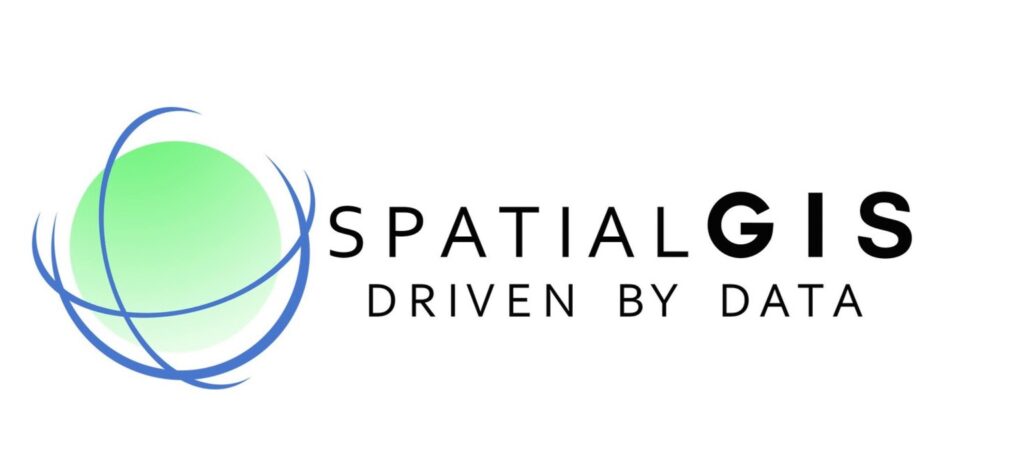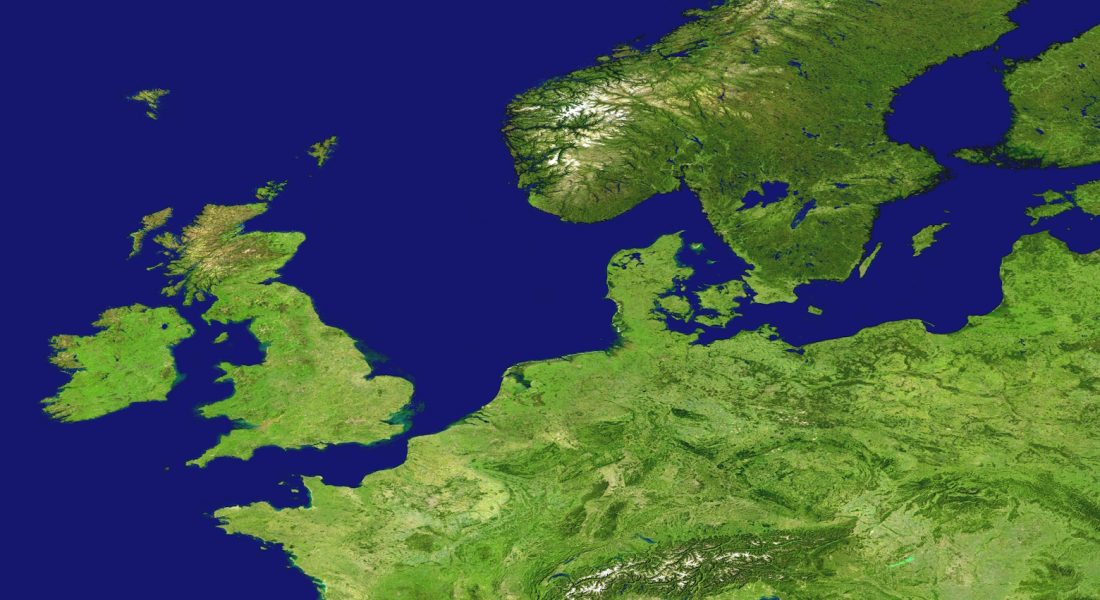Geospatial map data solutions are reshaping how industries tap into location-based insights, and the companies behind them are pushing the boundaries of what’s possible. From urban planning to environmental monitoring, these innovators use satellite imagery, AI, and advanced analytics to turn raw data into actionable maps. I’ve always been amazed at how a good map can reveal patterns you’d never spot otherwise-like traffic flows or deforestation trends. This article highlights the top players in this space, showcasing their role in making complex spatial data accessible and useful. It’s not just about drawing maps; it’s about helping people make smarter choices with the world’s geography.

1. FlyPix
We build a platform that uses AI to analyze satellite, aerial, and drone imagery, helping users detect and monitor objects across various industries. Our tools let people train custom models to spot specific items in geospatial data without needing deep technical skills. It’s kind of neat how you can just click around in our interactive sandbox to see the tech in action, like finding similar objects on a map in seconds. The platform is designed to handle complex scenes, from construction sites to forests, making it easier to turn raw images into useful insights.
Our work focuses on flexibility, letting users adapt the system to their specific needs, whether it’s tracking infrastructure or supporting environmental projects. We’ve seen how industries like agriculture and government use our solutions to simplify tasks that used to take ages. The platform also supports multispectral data, which is handy for detailed analysis, and we offer tools for sharing and visualizing results. It’s a practical setup for anyone looking to make sense of geospatial data without getting bogged down in complexity.
Key Highlights:
- Develop AI-driven platform for geospatial image analysis
- Support industries like construction, agriculture, and government
- Offer customizable AI model training without coding expertise
- Partner with NVIDIA and Google for enhanced capabilities
Services:
- Object detection and analysis in geospatial imagery
- Custom AI model training for specific use cases
- Multispectral data processing and analytics
- Interactive map visualization and data sharing tools
Contact Information:
- Website: flypix.ai
- Email: info@flypix.ai
- Phone: +49 6151 2776497
- Address: Robert-Bosch-Str. 7, 64293 Darmstadt, Germany
- LinkedIn: www.linkedin.com/company/flypix-ai

2. Esri
Esri develops ArcGIS, a widely used geospatial platform that integrates data with a geographic lens, helping organizations map and analyze spatial information. The software supports a range of applications, from urban planning to environmental monitoring, by connecting diverse datasets to uncover patterns. For example, government agencies rely on it to streamline regional planning, while businesses use it to identify optimal locations for expansion. The platform’s flexibility makes it a go-to for professionals who need to visualize complex data in a way that’s easy to grasp.
What’s interesting about Esri is how it bridges technical mapping with real-world problem-solving. ArcGIS isn’t just about creating pretty maps; it’s about giving people tools to make smarter decisions, like predicting climate impacts on housing or tracking wildlife. The company also partners with firms like Autodesk and Microsoft to blend spatial analytics with other technologies, which shows they’re thinking about how maps fit into bigger systems. It’s a practical approach that feels grounded in actual use cases, not just tech for tech’s sake.
Key Highlights:
- Develop ArcGIS, a comprehensive platform for geospatial data integration
- Support industries like government, business, and infrastructure with mapping tools
- Partner with Autodesk and Microsoft for enhanced spatial analytics
- Offer free cartography courses to teach map-making skills
Services:
- GIS software for mapping and spatial analysis
- Location-based APIs and SDKs for app development
- Geospatial data visualization and analytics tools
- Collaborative platforms for data sharing across organizations
Contact Information:
- Website: www.esri.com
- Email: sitemanager@esri.com
- Phone: +19097932853
- Address: 380 New York Street, Redlands, California, United States of America
- LinkedIn: www.linkedin.com/company/esri
- Facebook: www.facebook.com/esrigis
- Twitter: x.com/Esri
- Instagram: www.instagram.com/esrigram

3. Hexagon
Hexagon provides a mix of hardware, software, and sensor platforms focused on geospatial solutions, with a strong presence in industries like construction, mining, and urban planning. The company’s technologies capture physical data, analyze it, and turn it into actionable insights, often through tools like Leica Geosystems. These solutions help map everything from city layouts to massive infrastructure projects, ensuring accuracy in complex environments. It’s the kind of work that quietly underpins major developments, like skyscrapers or transportation networks.
The way Hexagon approaches geospatial tech feels methodical, almost like they’re piecing together a puzzle. Their focus on capturing raw data and then layering analytics on top makes their tools versatile for professionals who need precision. They also emphasize collaboration, with platforms that let teams share and visualize data in real time. It’s less about flashy maps and more about getting the nitty-gritty details right for practical outcomes.
Key Highlights:
- Provide geospatial hardware and software for multiple industries
- Include Leica Geosystems for precise data capture
- Support large-scale projects like construction and mining
- Focus on real-time data sharing and visualization
Services:
- Geospatial data capture and positioning tools
- Analytics and simulation software for spatial data
- Collaborative platforms for data visualization
- Automation solutions for geospatial workflows
Contact Information:
- Website: hexagon.com
- Phone: +46 8 601 26 20
- Address: Lilla Bantorget 15, SE-111 23 Stockholm, Sweden
- LinkedIn: www.linkedin.com/company/hexagon-ab
- Facebook: www.facebook.com/HexagonAB
- Twitter: x.com/HexagonAB
- Instagram: www.instagram.com/hexagon_ab

4. Maxar
Maxar delivers geospatial intelligence through high-resolution satellite imagery and analytics, serving sectors like defense, urban planning, and environmental monitoring. The company’s offerings, such as Vivid Advanced basemaps and Precision3D, provide detailed views of the Earth’s surface, which are useful for tasks like tracking urban growth or simulating real-world environments. Maxar also builds spacecraft, contributing to space exploration and communication systems. It’s a company that seems to live at the intersection of ground-level insights and out-of-this-world tech.
What stands out is how Maxar’s work feels both big-picture and hyper-detailed. Their satellite imagery can zoom in to a few centimeters, which is wild when you think about planning a city or monitoring a forest from space. Meanwhile, their space systems, like satellites for communication, show they’re not just focused on Earth. It’s a practical mix of high-tech tools that tackle real problems, from national security to sustainable development.
Key Highlights:
- Provide high-resolution satellite imagery for geospatial analysis
- Develop 3D datasets for simulation and planning
- Build spacecraft for communication and exploration
- Support defense, commercial, and environmental applications
Services:
- Satellite imagery and geospatial analytics
- 3D modeling for urban and environmental planning
- Spacecraft design and manufacturing
- GPS resilience software for autonomous systems
Contact Information:
- Website: www.maxar.com
- Phone: 800.496.1225
- Email: support@maxar.com
- Address: 1300 W 120th Avenue, Westminster, CO 80234
- LinkedIn: www.linkedin.com/company/maxar-technologies-ltd
- Facebook: www.facebook.com/MaxarTechnologies
- Twitter: x.com/Maxar
- Instagram: www.instagram.com/maxartechnologies

5. Trimble
Trimble focuses on geospatial solutions that support industries like construction, transportation, and government by integrating precise positioning and 3D modeling. The company’s tools, including software like SketchUp, help professionals map and analyze spatial data for projects ranging from city planning to infrastructure maintenance. It’s interesting how Trimble’s tech connects physical work-like paving a racetrack-with digital precision, making complex tasks feel more manageable. The company also emphasizes real-time data workflows, which is handy for keeping projects on track.
What stands out is Trimble’s practical approach to geospatial challenges. The solutions are built to handle real-world problems, like optimizing supply chains or surveying land, without overcomplicating things. Partnerships, such as with RFK Racing, show how the company applies its tech in unexpected places, blending innovation with everyday utility. It’s less about flashy maps and more about getting the job done right.
Key Highlights:
- Develop geospatial tools for construction, transportation, and government
- Offer 3D modeling software like SketchUp for design and planning
- Support real-time data integration for project efficiency
- Partner with organizations like RFK Racing for innovative applications
Services:
- Geospatial mapping and surveying tools
- Precise positioning technology for fieldwork
- 3D modeling and data analytics software
- Workflow solutions for infrastructure and logistics
Contact Information:
- Website: www.trimble.com
- Phone: +1 (720) 887-6100
- Address: 10368 Westmoor Drive, Westminster, CO 80021, USA
- LinkedIn: www.linkedin.com/company/trimble
- Facebook: www.facebook.com/TrimbleCorporate
- Twitter: x.com/TrimbleCorpNews
- Instagram: www.instagram.com/trimble_official

6. Fugro
Fugro specializes in collecting and analyzing Geo-data to support projects in construction, environmental monitoring, and coastal resilience. The company uses advanced tools to map both surface and subsurface environments, helping clients understand the Earth’s complexities for better planning. It’s kind of fascinating how Fugro’s work spans from ocean floors to urban infrastructure, making sense of data most people wouldn’t know where to start with. The focus on sustainable solutions feels particularly relevant for today’s challenges.
The company’s strength lies in its ability to turn raw Geo-data into practical insights. For instance, the solutions help assess risks for building projects or monitor natural resources, which is crucial for long-term planning. Fugro’s history since 1962 shows a steady commitment to refining how geospatial data is used, and the emphasis on collaboration with clients keeps things grounded. It’s a no-nonsense approach that prioritizes real outcomes over tech hype.
Key Highlights:
- Collect Geo-data for natural and built environments
- Support sustainable project planning and monitoring
- Operate in diverse fields like marine and urban development
- Focus on long-term data-driven solutions
Services:
- Geospatial data collection and mapping
- Subsurface and environmental analysis
- Coastal resilience and ocean health solutions
- Subscription-based Geo-data services
Contact Information:
- Website: www.fugro.com
- Phone: +1 713 369 5600
- Address: 13501 Katy Freeway, Suite 1050 Houston TX 77079
- LinkedIn: www.linkedin.com/company/fugro
- Facebook: www.facebook.com/fugro
- Twitter: x.com/fugro
- Instagram: www.instagram.com/fugro

7. Geo.me
Geo.me provides digital mapping and location services, focusing on enterprise-grade solutions for industries like retail, mobility, and finance. The company builds tools for geocoding, routing, and spatial analytics, often leveraging partnerships with platforms like Google Maps and AWS. There’s something refreshing about how Geo.me simplifies complex location data into user-friendly applications, like store locators or logistics trackers. The solutions feel tailored to real business needs, not just abstract tech.
What’s notable is how Geo.me emphasizes customization and scalability. The platforms allow businesses to integrate maps and location insights directly into their operations, whether for optimizing delivery routes or analyzing market trends. Founded in 2008, the company has carved out a niche by focusing on practical, accessible tools rather than overwhelming users with technical jargon. It’s a straightforward approach that makes geospatial tech feel approachable.
Key Highlights:
- Provide digital mapping for enterprise applications
- Partner with Google Maps Platform and AWS for robust solutions
- Focus on industries like retail, mobility, and finance
- Offer customizable tools for location-based insights
Services:
- Digital map interfaces for web and mobile
- Location intelligence and spatial analytics
- Geocoding and address management tools
- Advanced routing and asset tracking solutions
Contact Information:
- Website: www.geo.me
- Phone: +44 (0)330 223 0461
- Address: 30 STAMFORD STREET, LONDON SE1 9LQ, UNITED KINGDOM

8. CARTO
CARTO builds a cloud-native platform for geospatial analysis, designed to integrate seamlessly with enterprise data systems. The tools focus on simplifying spatial analytics, letting users visualize and analyze location data without needing complex setups. It’s pretty neat how CARTO’s drag-and-drop interface makes it approachable for non-experts, while still packing enough power for heavy-duty tasks like 5G network planning. The platform also taps into AI to let users interact with maps using plain language, which feels like a practical nod to making tech less intimidating.
What’s cool about CARTO is how it streamlines workflows for industries like telecom, retail, and finance. The solutions help businesses move from static reports to dynamic, interactive maps that reveal insights like customer patterns or site performance. The emphasis on low-code analytics and app development means users can quickly build tools tailored to their needs. It’s a straightforward approach that feels like it’s built for people who just want to get things done.
Key Highlights:
- Develop a cloud-native platform for geospatial analytics
- Support industries like telecom, retail, and finance
- Integrate AI for natural language map interaction
- Focus on scalable, low-code solutions for enterprises
Services:
- Spatial analysis with drag-and-drop tools
- Interactive map and dashboard visualization
- AI-driven geospatial reasoning agents
- Framework-agnostic app development for data lakehouses
Contact Information:
- Website: carto.com
- Email: support@carto.com
- Facebook: www.facebook.com/CartoDB
- LinkedIn: www.linkedin.com/company/carto
- Twitter: x.com/CARTO

9. Cyclomedia
Cyclomedia captures 360-degree street-level imagery and LiDAR data to create detailed visualizations for urban planning, infrastructure, and public safety. The Street Smart web viewer lets users access panoramic images and point clouds, making it easier to analyze environments remotely. There’s something almost eerie about how clearly you can explore a city street from your desk, like a virtual walk-through. The company’s focus on combining imagery with AI analytics helps professionals tackle practical challenges, like assessing road safety or managing utility assets.
The approach at Cyclomedia feels grounded in real-world applications. The solutions support tasks like tax assessments for cities or risk evaluations for insurance, which shows a knack for addressing specific needs. By regularly updating massive datasets of street imagery, the company ensures users have current information to work with. It’s a no-frills way of delivering geospatial data that prioritizes utility over complexity.
Key Highlights:
- Capture 360-degree street imagery and LiDAR data
- Serve industries like government, utilities, and insurance
- Offer AI-powered analytics for actionable insights
- Provide a user-friendly web viewer for data access
Services:
- Street-level panoramic imagery
- LiDAR-based point cloud visualization
- AI-driven spatial analytics
- Tools for urban planning and asset management
Contact Information:
- Website: www.cyclomedia.com
- Phone: +1.510.900.5142
- Email: info-us@cyclomedia.com
- Address: 8215 Greenway Blvd, Suite 300, Middleton, WI 53562
- LinkedIn: www.linkedin.com/company/cyclomedia
- Facebook: www.facebook.com/p/Cyclomedia-USA-100089896234999
- Twitter: x.com/CycloMediaUS
- Instagram: www.instagram.com/cyclomedia_

10. Privateer
Privateer offers a platform called Elements that fuses data from satellites, terrestrial sources, and AI to provide insights across land, sea, air, and space. The solutions focus on delivering real-time intelligence for tasks like vessel tracking or monitoring environmental changes. It’s kind of wild to think about a single platform pulling together data from so many domains to help with things like disaster response or supply chain logistics. The intuitive interface makes it accessible, even for users who aren’t data scientists.
What stands out with Privateer is the emphasis on actionable outcomes. The platform integrates with existing workflows, offering tools like custom alerts and APIs to fit specific needs, whether for defense or energy sectors. The company’s commitment to sustainability, like protecting Earth’s orbit, adds a layer of purpose to the tech. It feels like a practical, forward-thinking approach to geospatial challenges without getting lost in overly technical details.
Key Highlights:
- Develop Elements platform for multi-domain data fusion
- Support defense, energy, and finance with real-time insights
- Focus on sustainability in space and Earth applications
- Offer user-friendly interfaces for complex data analysis
Services:
- Satellite and terrestrial data integration
- AI-driven analytics for geospatial intelligence
- Vessel tracking and environmental monitoring
- Custom API and alert systems for workflow integration
Contact Information:
- Website: www.privateer.com
- LinkedIn: www.linkedin.com/company/privateerspace
- Twitter: x.com/privateerspace
- Instagram: www.instagram.com/privateer.space

11. Foursquare
Foursquare provides location technology and data solutions that help businesses analyze consumer behavior and optimize strategies across industries like marketing, retail, and app development. The platform uses stop-detection to map visits to points of interest, offering insights into foot traffic and economic trends. It’s interesting how Foursquare’s tools can pinpoint real-time consumer movements, making it easier for companies to tailor campaigns or plan store locations. The focus on privacy, with regular audits and user data control, adds a practical layer to the offerings.
The company’s strength lies in its flexible integration with platforms like AWS and The Trade Desk, allowing users to access geospatial data in formats that fit their workflows. Solutions like the Places API and Spatial Studio enable developers and analysts to build custom applications or visualize complex datasets. It’s a versatile setup that feels designed for businesses looking to make sense of location data without jumping through technical hoops.
Key Highlights:
- Develop location-based analytics for marketing and retail
- Offer tools for real-time consumer movement tracking
- Prioritize data privacy with user control and audits
- Integrate with multiple platforms for flexible data access
Services:
- Campaign attribution and performance tracking
- Audience segmentation based on location data
- Custom geofencing for real-time marketing
- Geospatial analytics and visualization tools
Contact Information:
- Website: foursquare.com
- LinkedIn: www.linkedin.com/company/foursquare
- Twitter: x.com/foursquare

12. SpatialGIS
SpatialGIS focuses on delivering geospatial analytics and intelligence, primarily for federal agencies, using tools like aerial UAVs and advanced data analysis. The services turn complex spatial data into clear, actionable insights for government operations, from infrastructure planning to mission-critical decisions. There’s something grounded about how SpatialGIS emphasizes cybersecurity, ensuring sensitive data stays secure, which feels essential for public sector work. The approach is tailored, aiming to simplify decision-making without overwhelming users.
What’s notable is how SpatialGIS combines scalability with precision. The solutions, built on years of experience, support real-time analytics and integrate with various domains like IT and data management. This makes it easier for agencies to adapt the tools to evolving needs, whether mapping terrain or managing assets. It’s a practical, no-nonsense way to handle geospatial challenges in high-stakes environments.
Key Highlights:
- Provide geospatial analytics for federal agencies
- Use aerial UAVs for data collection
- Focus on cybersecurity for secure data handling
- Offer scalable solutions across multiple domains
Services:
- Real-time geospatial intelligence
- Aerial UAV-based data collection
- Data management and analytics
- IT support for geospatial applications
Contact Information:
- Website: spatialgisservices.com
- Phone: (301) 442-3914
- Email: Kendrick@spatialgisservices.com

13. Cyvl
Cyvl develops an AI-powered platform for infrastructure management, helping governments and engineers assess roads, sidewalks, and other assets with LiDAR and imagery. The system creates digital twins of urban environments, automating tasks like pavement condition scoring and asset mapping. It’s kind of impressive how Cyvl’s sensors can be mounted on any vehicle to scan streets quickly, turning raw data into something cities can actually use. The platform integrates with tools like ArcGIS, making it practical for existing workflows.
The company’s focus is on speeding up infrastructure assessments while keeping data accurate. By using AI to detect defects and generate reports, Cyvl simplifies complex tasks like prioritizing road repairs or ensuring ADA compliance. The approach feels like it’s built for busy public works departments that need clear, fast insights without getting bogged down in manual processes.
Key Highlights:
- Create digital twins for urban infrastructure
- Support municipalities with AI-driven analytics
- Integrate with GIS and asset management platforms
- Automate pavement and sidewalk assessments
Services:
- LiDAR and imagery-based infrastructure scanning
- AI-driven defect detection and condition scoring
- Asset management and right-of-way mapping
- Data integration with third-party software
Contact Information:
- Website: www.cyvl.com
- LinkedIn: www.linkedin.com/company/cyvl
- Instagram: www.instagram.com/cyvl.ai

14. UrbanLogiq
UrbanLogiq creates a platform that integrates diverse data sources, like traffic sensors and economic indicators, to help governments make informed decisions. The tools focus on turning raw data into clear insights through maps, dashboards, and predictive analytics, which is pretty useful for things like managing road safety or planning transit. It’s kind of cool how the platform pulls together everything from crash data to demographic trends, making it easier for public officials to spot patterns and act on them. The emphasis on ethical AI and privacy standards shows a thoughtful approach to handling sensitive information.
The company’s solutions cater to various government needs, from fire prevention to economic development, by centralizing data into one system. This setup allows users to analyze complex issues, like identifying at-risk communities or optimizing traffic flow, without needing to juggle multiple tools. The platform’s design feels practical, built to streamline workflows while keeping security tight, which is crucial for public sector work. It’s a straightforward way to make data work harder for cities and agencies.
Key Highlights:
- Develop a unified platform for government data integration
- Focus on ethical AI and data privacy compliance
- Support decision-making with predictive analytics
- Serve multiple domains like transportation and public safety
Services:
- Data visualization and interactive dashboards
- Spatial analysis and mapping tools
- Predictive analytics for traffic and safety
- Economic and demographic data integration
Contact Information:
- Website: www.urbanlogiq.com
- Email: info@urbanlogiq.com
- Address: 700 West Pender – Suite #1505, Vancouver, BC, V6C 1G8
- LinkedIn: www.linkedin.com/company/urbanlogiq
- Facebook: www.facebook.com/UrbanLogiq
- Twitter: x.com/UrbanLogiq

15. Sanborn
Sanborn offers a wide range of geospatial services, from mapping and LiDAR to custom GIS applications, serving government and industries like transportation and forestry. The company uses advanced technologies to collect and analyze spatial data, helping clients with tasks like urban planning or environmental monitoring. It’s neat how Sanborn’s long history brings a sense of reliability to the work, blending traditional mapping with modern tools like flight-based data collection.
The solutions are designed to be comprehensive, covering everything from raw data to tailored software for specific needs. Partnerships with companies like Google and Esri enhance the offerings, making it easier to integrate with existing systems. The focus on flexibility, like providing staff support or custom apps, feels practical for clients who need end-to-end geospatial help. It’s a solid approach for tackling diverse projects without overcomplicating things.
Key Highlights:
- Provide geospatial solutions for government and industry
- Use LiDAR and flight-based data collection
- Partner with major tech platforms for integration
- Offer customized tools and staffing support
Services:
- Mapping and spatial analysis
- LiDAR data collection
- Custom GIS web applications
- Program and staff augmentation
Contact Information:
- Website: sanborn.com
- Phone: 1.866.726.2676
- Email: information@sanborn.com
- Address: 305 S. Rockrimmon Blvd, Suite 200 Colorado Springs, CO 80919
- LinkedIn: www.linkedin.com/company/sanborn
Conclusion
Geospatial map data solutions are changing the way industries make sense of the world, turning raw data like satellite images or sensor readings into clear, actionable insights. It’s pretty cool how these tools help people tackle everything from city planning to environmental monitoring with maps that reveal patterns you’d otherwise miss. Different companies bring their own spin, offering platforms that range from AI-driven analytics to street-level imagery, so there’s something out there for pretty much any need. The focus is on making complex data easy to use, whether you’re a government official or a business strategist.
What stands out is how these solutions keep getting smarter, blending real-time data and flexible tools to fit specific industries. They’re not just about pretty visuals; they’re about solving real problems, like figuring out where to build infrastructure or how to optimize logistics. As technology keeps moving forward, these companies are likely to keep finding new ways to make geospatial data more accessible and useful. It’s an exciting field to follow, especially if you’re into how data can shape better decisions across the board.
